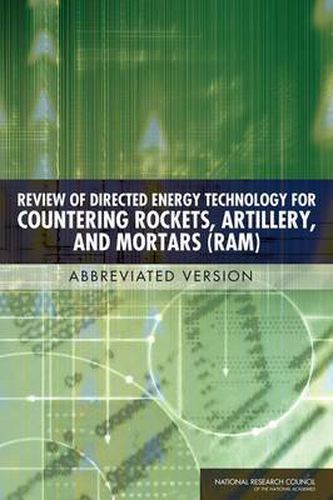Readings Newsletter
Become a Readings Member to make your shopping experience even easier.
Sign in or sign up for free!
You’re not far away from qualifying for FREE standard shipping within Australia
You’ve qualified for FREE standard shipping within Australia
The cart is loading…






The United States Army is looking for ways to defend against missile and mortar attacks. In this book, the National Research Council assesses a plan to create a 100 kW mobile, solid-state, laser weapon that could defend an area several kilometers in diameter. The NRC provides several recommendations as mentioned below. A 100 kW Laser is of limited value, so the program’s goal should be a 400 kW weapon. The Army should proceed with the program in stages, focusing first on a rugged transportable platform for the weapon using existing 25 kW laser technology, then directing resources toward 100kW and 400 kW weapons.The Army should perform a detailed, quantitative study of the effectiveness of a high energy, solid-state laser weapon against future threats. The Army should continue to participate in U.S.-based and international research on high-energy lasers and related equipment. The committee found substantial benefits for the Army’s solid-state laser program from other programs outside the Army. The Army should conduct risk-assessments that investigate the effects that a high energy laser may have on other airborne platforms in the vicinity of the target. The Army should study eye safety for both the operators of the laser and for civilians. The results of these studies should be integrated into the development of the weapon.
$9.00 standard shipping within Australia
FREE standard shipping within Australia for orders over $100.00
Express & International shipping calculated at checkout
The United States Army is looking for ways to defend against missile and mortar attacks. In this book, the National Research Council assesses a plan to create a 100 kW mobile, solid-state, laser weapon that could defend an area several kilometers in diameter. The NRC provides several recommendations as mentioned below. A 100 kW Laser is of limited value, so the program’s goal should be a 400 kW weapon. The Army should proceed with the program in stages, focusing first on a rugged transportable platform for the weapon using existing 25 kW laser technology, then directing resources toward 100kW and 400 kW weapons.The Army should perform a detailed, quantitative study of the effectiveness of a high energy, solid-state laser weapon against future threats. The Army should continue to participate in U.S.-based and international research on high-energy lasers and related equipment. The committee found substantial benefits for the Army’s solid-state laser program from other programs outside the Army. The Army should conduct risk-assessments that investigate the effects that a high energy laser may have on other airborne platforms in the vicinity of the target. The Army should study eye safety for both the operators of the laser and for civilians. The results of these studies should be integrated into the development of the weapon.